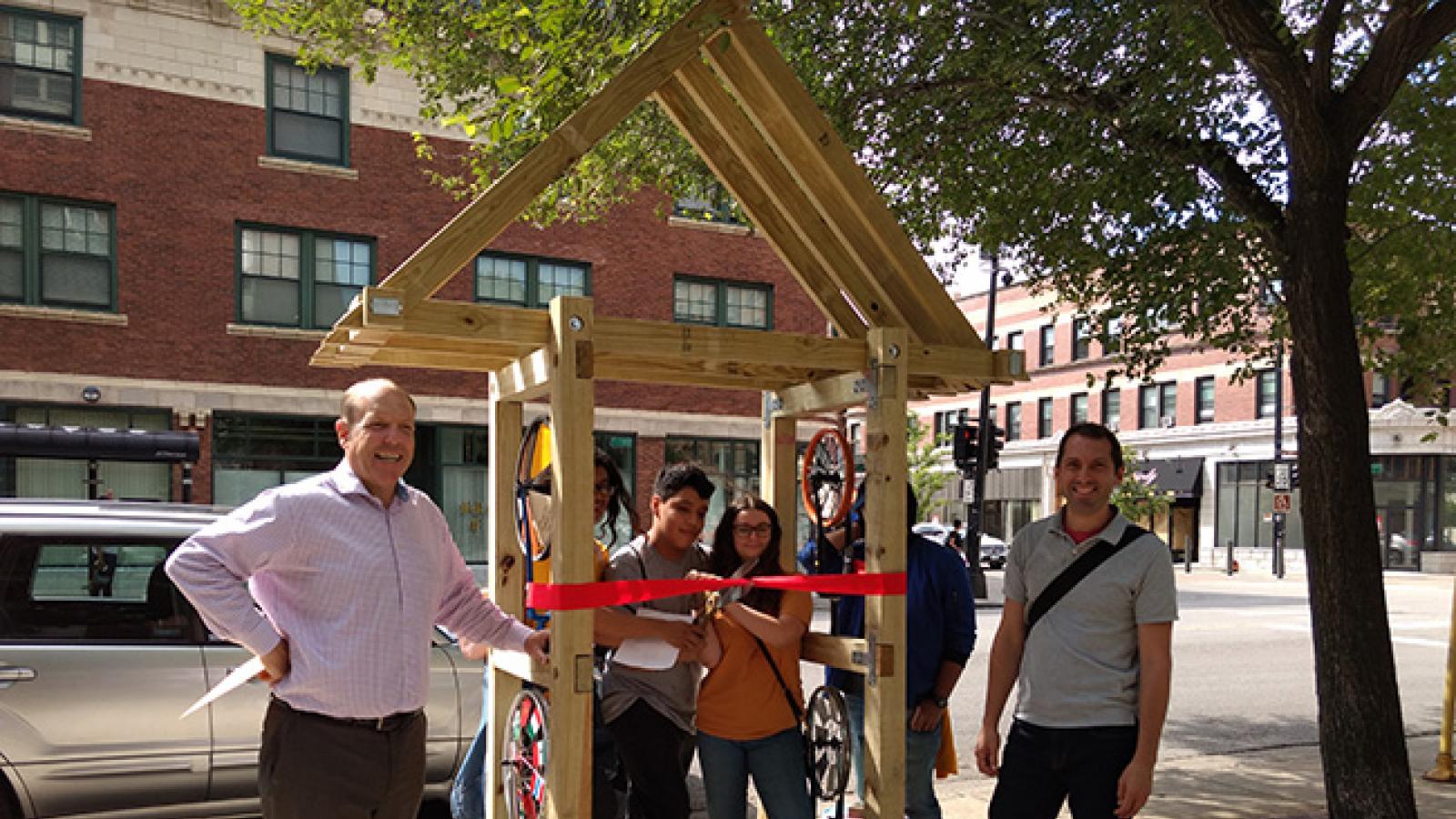In Chicago, A Place Where Teens Can Shape Their Own Territory

When architect Helen Slade was living near a high school in Chicago’s Albany Park neighborhood, she expressed frustration about the area’s graffiti and trash, which she and neighbor Rashmi Ramaswamy, also an architect, attributed to the local high school students. But in talking with a third architect, Mike Newman, the trio realized that within the problem lay a wonderful opportunity. Together, they asked, “Rather than seeing teenagers as a liability, how about we look at them as an asset, and find a way to apply all that energy and interest in making change through urban design?”
Those conversations led Slade, Ramaswamy, and Newman to co-found Territory NFP in 2012. The organization holds studios that introduce youth in three Chicago neighborhoods—Austin, Uptown, and Albany Park—to the principles of design, eventually empowering them to hold design internships with the organization, conduct their own design workshops for the community, and even plan and execute projects for public spaces. Past projects include “People Spot,” which transformed a section of street parking into a pedestrian-oriented social environment; “Uplifting Uptown,” which installed illuminated arrow sculptures and pod seating at several street intersections; and “Walk in Our Shoes,” which led Chicagoans on walking tours of Albany Park, as seen through a teenager’s eyes.
“Territory is giving the reins over to young people to speak,” Slade said. “The design process is a vehicle for that. Teens really value seeing something that they actually built. They can look at that thing and say, ‘I designed that. I built that. I installed that. I painted that. I made that.’ The team negotiated with an alderman, they wrote a grant, they raised the funding.”
The hope is that the success of Territory’s projects, and the leadership exhibited by its teen participants, will change the way youth are engaged by other organizations and the city itself, and will give them a more permanent seat at the table in terms of urban design. Clancy Hudson, a senior at Von Steuben Metropolitan High School became involved with Territory during her freshman year. As her own interest in design has grown, so too has her belief that she and her peers deserve more of a say in the places they inhabit. “Teens go into public spaces because that’s one of the main areas they’re allowed,” she said. “They’re interacting with objects that weren't really designed by them or for them. I think one of Territory’s long-term impacts is to show people that they should be getting teens involved in the design process and how important teens voices are.”
By incorporating young voices, neighborhoods in turn become more habitable, welcoming places to live, said Jaime Flores, a junior at Roosevelt High School who also became involved with Territory during his freshman year. “In different parts of Chicago, there are some streets that get no love while others get murals,” he said. But creating public art projects with his peers “makes it feel more like home, because it feels personalized. It doesn't make you think, ‘Oh, I'm just living here and no one cares.’ People are acknowledging that we, as a community, are living here and we're getting recognized.”
Aside from the larger-scale impact of Territory, both Flores and Hudson described how the organization has helped them blossom as individuals. Flores said that Territory has helped him “grow as a person, maturity-wise,” and has introduced him to teens from other backgrounds and neighborhoods that he wouldn’t have met otherwise. “It brings everyone together,” he said.
Hudson has also experienced something of a personal transformation through her involvement with Territory. Last year, she and other teen leaders from the organization were invited to present at Public X Design, an international design conference held at Detroit’s Gehl Institute. “I have this huge fear of talking in front of people, especially in a large, new environment,” Hudson said. “I often will silence myself and not let myself speak. Going to that event and being able to present to all those people built my confidence. Now I love doing presentations and speaking my mind. I feel more comfortable sharing my ideas and thoughts.”
Having a consistent outlet for expression and discussion has also helped her navigate the turbulence of adolescence. “A lot of times teens have such built-up emotions and feelings about stuff in their everyday lives,” she said. “Through Territory and through urban design, we've actually had opportunities to express how we feel about certain stuff.”
For Slade, watching young people like Hudson and Flores find their voices, and find strength in strengthening their communities, is what this work all about. “The most meaningful thing for me is watching and participating in the transformation that happens with so many of the young people who have been part of Territory,” she said. “You don’t realize that things could be made better until you see that you can make them better.”




